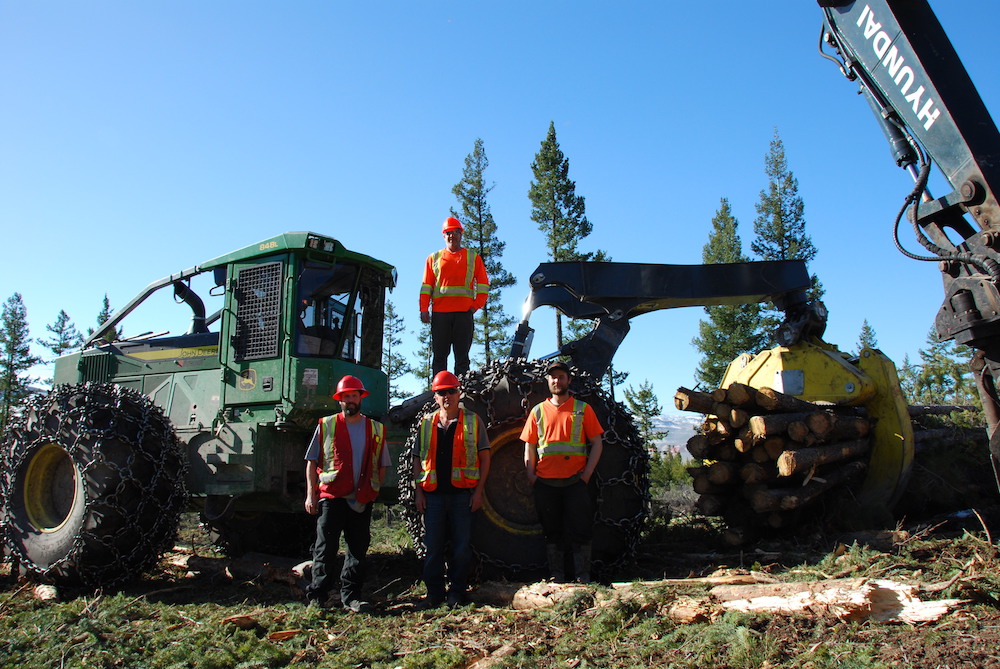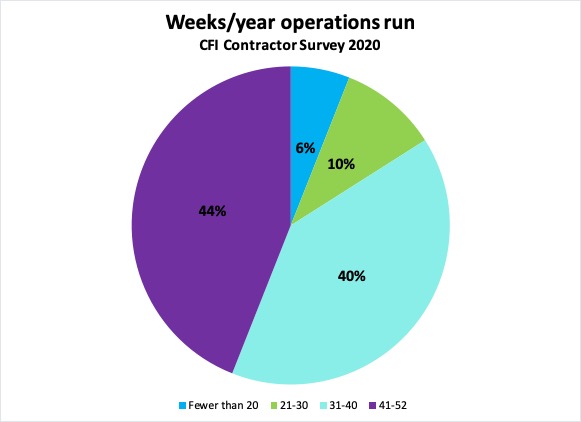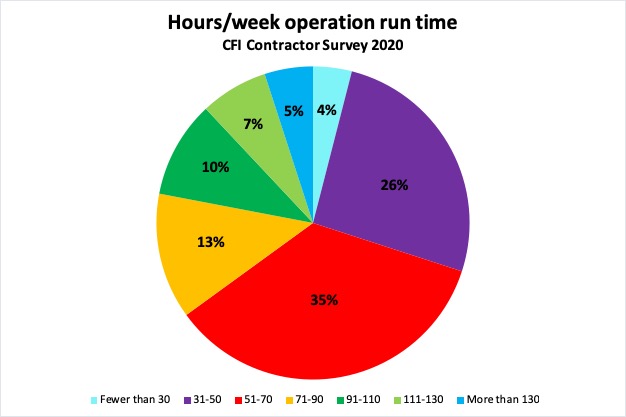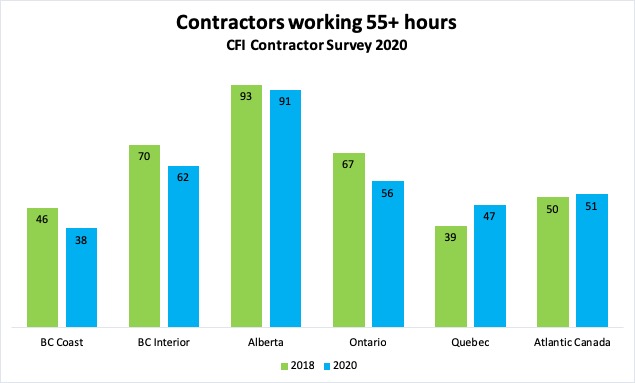
Features
Harvesting
Logging Profiles
Survey snippet 7: Logger work-life balance
September 22, 2020 By Ellen Cools
 Photo: Annex Business Media
Photo: Annex Business Media The past year-and-a-half has been a turbulent one for loggers, with available fibre supply in the western provinces dwindling due to pests and wildfire, weak lumber markets causing sawmills to shut down, and COVID-19 hitting just as the markets started to improve. It makes sense, then, that contractors aren’t running their operations as long as they were in 2018, when the lumber industry was in an upswing.
Results from CFI’s 2020 Contractor Survey show that the number of operations harvesting 31-40 weeks jumped up from 28 per cent in 2018 to 40 per cent in 2020. This is close to 2016 levels, when 45 per cent reported the same operating season.
Correspondingly, there was a drop in the number of year-round or almost-year-round operations, from 54 per cent in 2018 to 44 per cent in 2020 – again, close to 2016 levels (44 per cent).
The number of companies harvesting under 30 weeks remains relatively unchanged across all three survey years. Ten per cent run 21-30 weeks, and just six per cent run fewer than 20 weeks.
Regionally, just like in 2018, Quebec has the highest portion of contractors operating fewer than 20 weeks per year, at 13 per cent, followed by Atlantic Canada at 10 per cent.
More than half of all contractors in the B.C. Coast, Ontario and Atlantic Canada operate at least 41 weeks of the year. However, in the B.C. Interior and Alberta, the majority (72 per cent and 64 per cent, respectively) work 31-40 weeks per year.

Percentage of contractors who report operating in these week ranges each year.
With regards to weekly hours, the percentage of operations working 31-50 hours per week has jumped from 16 per cent in 2018 to 26 per cent in 2020. The percentage of operations that run more than 70 hours per week has continued to drop from 46 per cent in 2016 to 40 per cent in 2018 and now 35 per cent in 2020.
More than one-third of contractors continue to operate 51-70 hours per week. Five per cent work more than 130 hours in a week. While the majority of contractors working more than 130 hours per week are in Alberta (30 per cent), a small percentage of contractors from Ontario (six per cent), Quebec (three per cent) and the B.C. Coast (three per cent) also report doing so. This is possibly as a result of climate change, which has led to shorter operating seasons in some regions.

Percentage of contractors who report running these hours each week.
Personal workload
Given that operations aren’t running as long as they were in 2018, one would think that crews would be working fewer hours in a typical week. But when asked about their personal workload, the numbers continue to be very close to the results in 2018 and 2016. There was a tiny drop in the largest category, with 58 per cent of loggers working more than 55 hours per week in 2020 compared to 59 per cent in 2018 and 61 per cent in 2016.
There was also a slight drop in the percentage of contractors working 51-55 hours per week (10 per cent in 2020 compared to 12 per cent in 2018), but the biggest change is in the 46-50 hour per week category. In 2020, 15 per cent of respondents report working 46-50 hours on a weekly basis, compared to 10 per cent in 2018 and seven per cent in 2016.
On a regional basis, just as in 2018, more loggers in Alberta report working more than 55 hours per week (91 per cent), followed by loggers in the B.C. Interior (62 per cent). Quebec saw a big jump with 47 per cent of loggers working more than 55 hours compared to 39 per cent in 2018. In contrast, the number of loggers working more than 55 hours dropped in the B.C. Coast from 46 per cent in 2018 to 38 per cent, making it the region with the most contractors working “reasonable” hours.

Percentage of contractors working more than 55 hours per week.
Missed last week’s survey snippet? Find a collection of reports published to date here. Look for more news from the CFI 2020 Contractor Survey in our eNews over the coming weeks, with a final digital report in December and a summary in the November/December print issue. Be sure to subscribe to our free eNews to get all the latest industry news.
This survey was conducted in April and May 2020 by independent research firm Bramm & Associates, generating 271 replies to a detailed list of questions. Respondents were distributed according to the geographic breakdown of the forest industry, with 44 per cent of respondents in Western Canada, 26 per cent in Quebec and the rest found in Ontario, Atlantic Canada, and central Canada. Within B.C., responses were split between the B.C. Coast and Interior. Many thanks to our sponsors for making this research possible – Hultdins, Tigercat and John Deere.
Print this page